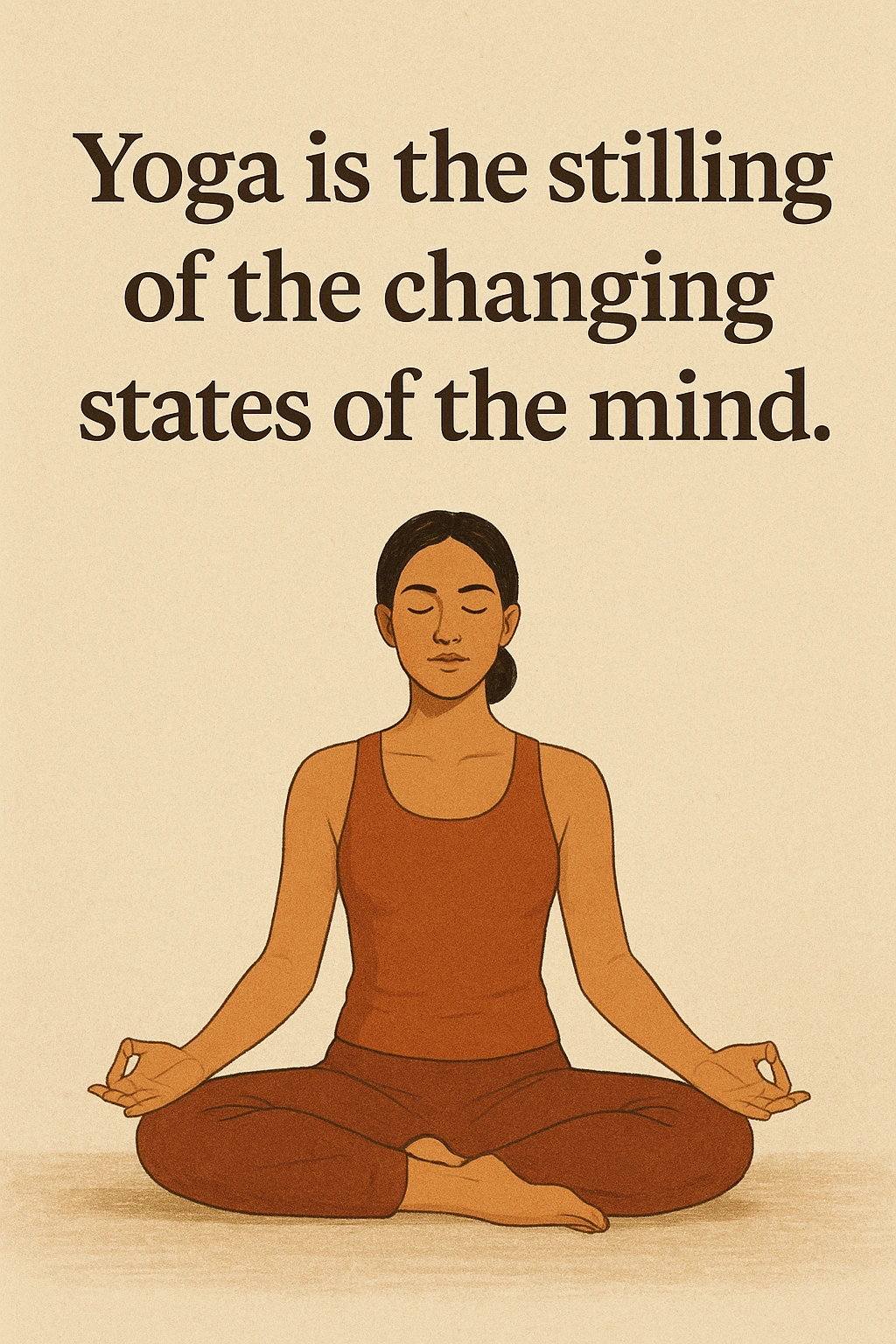Discover the transformative power of yoga with our expert guides, classes, and tips. Enhance your practice and find balance in your life today.
Understanding the essence of Yoga from Patañjali’s Yoga Sūtras
It is often associated with physical postures, flexibility, and fitness, but its deepest meaning goes far beyond the mat. The ancient sage Patañjali, in the Yoga Sūtras, defines yoga in one of the most profound and concise statements:
“Yogaḥ citta-vṛtti-nirodhaḥ”
It is the stilling of the changing states of the mind.
This single line encapsulates the heart of yoga—the inner practice. It points to a transformative journey where the mind becomes calm, steady, and clear, allowing one to experience their true nature.
Understanding the Mind’s Changing States
The mind is constantly active. Thoughts rise and fall, emotions shift, and perceptions change moment by moment. These fluctuations—vṛttis—are natural, but they often create restlessness, confusion, and suffering.
Also, read Where is the Best Room on a Cruise Ship
The “changing states of the mind” include:
- Wandering thoughts
- Emotional turbulence
- Worry about the future
- Regret about the past
- Constant reactions to sensory inputs
When these changes dominate us, we lose touch with inner peace.
Why Stillness Matters
Stilling the mind does not mean suppressing thoughts or forcing silence. Instead, it means reducing unnecessary mental noise so that clarity and awareness can emerge.
Also, read Current Affairs Today: Global Outage, India’s GDP Boom
A stilled mind allows:
- Better focus and decision-making
- Freedom from stress and anxiety
- Greater emotional stability
- Insight into one’s true self
It is in this inner quiet that yoga reveals its spiritual dimension.
How Yoga Helps Still the Mind
It offers a systematic approach to calming mental fluctuations. Its practices work on both body and mind:
1. Asana (Physical Postures)
Gentle, mindful movements release tension and prepare the body for stillness. When the body is stable, the mind naturally becomes more focused.
2. Pranayama (Breath Control)
The breath is the bridge between body and mind. Regulated breathing slows mental activity, reduces anxiety, and brings awareness to the present moment.
3. Meditation (Dhyana)
Meditation trains the mind to observe without reacting. Over time, thoughts lose their power to disturb the practitioner.
4. Mindfulness in Daily Life
Yoga encourages conscious living—being present, acting with awareness, and reducing impulsive reactions.
5. Ethical Foundations (Yamas & Niyamas)
These principles guide behavior and lifestyle, reducing internal conflict and improving mental harmony.
The Ultimate Goal: Inner Freedom
When the mind’s fluctuations are stilled, something extraordinary happens:
We come face to face with our true nature—pure awareness, peace, and joy.
This is the state of samadhi, the deep absorption where the practitioner transcends the limitations of the mind.
Yoga, therefore, is not an escape from life but a way to engage with it more consciously and peacefully. It teaches us to respond rather than react, to observe rather than be overwhelmed.
Conclusion
“Yoga is the stilling of the changing states of the mind” reminds us that yoga is ultimately an inner journey.
Beyond poses and breathing techniques, it is a path toward mental clarity, emotional balance, and spiritual awakening.
In a world filled with distractions and stress, the wisdom of yoga offers timeless guidance: true peace begins within.


